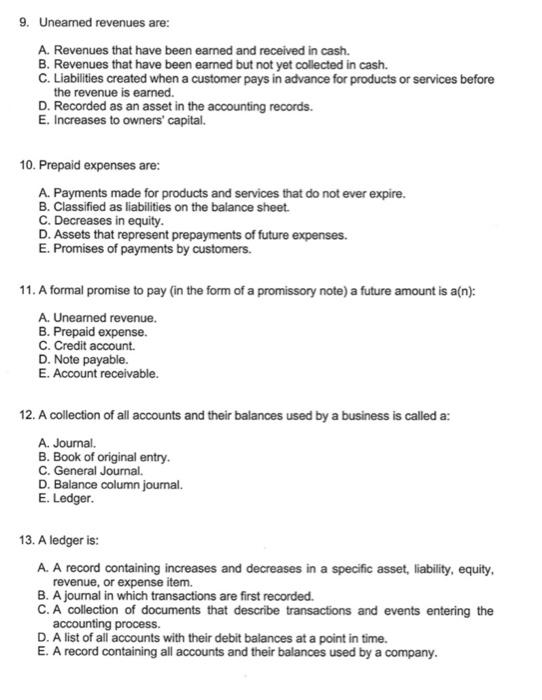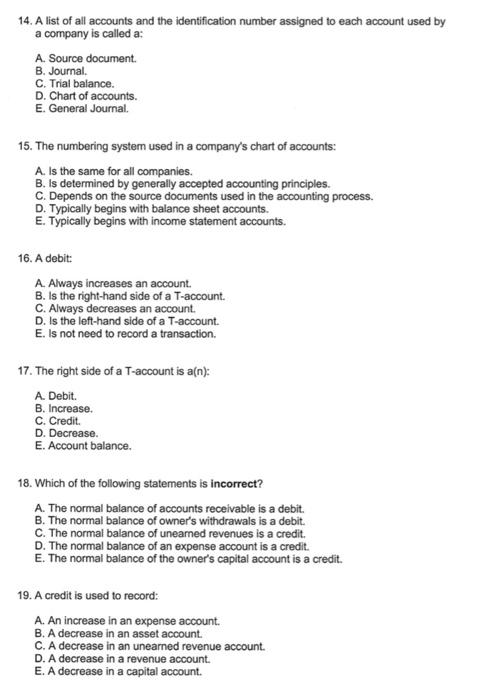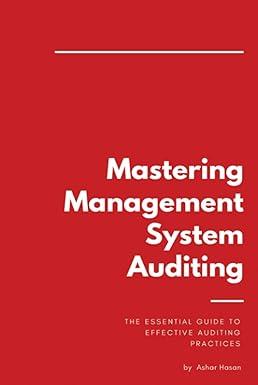9-19

9. Uneared revenues are: A. Revenues that have been earned and received in cash. B. Revenues that have been earned but not yet collected in cash. C. Liabilities created when a customer pays in advance for products or services before the revenue is earned. D. Recorded as an asset in the accounting records. E. Increases to owners' capital. 10. Prepaid expenses are: A. Payments made for products and services that do not ever expire. B. Classified as liabilities on the balance sheet. C. Decreases in equity. D. Assets that represent prepayments of future expenses. E. Promises of payments by customers. 11. A formal promise to pay (in the form of a promissory note) a future amount is a(n): A. Unearned revenue. B. Prepaid expense. C. Credit account. D. Note payable. E. Account receivable. 12. A collection of all accounts and their balances used by a business is called a: A. Journal B. Book of original entry. C. General Journal D. Balance column journal. E. Ledger. 13. A ledger is: A. A record containing increases and decreases in a specific asset, liability, equity, revenue, or expense item. B. A journal in which transactions are first recorded. C. A collection of documents that describe transactions and events entering the accounting process. D. A list of all accounts with their debit balances at a point in time. E. A record containing all accounts and their balances used by a company. 14. A list of all accounts and the identification number assigned to each account used by a company is called a; A. Source document. B. Journal C. Trial balance. D. Chart of accounts. E. General Journal 15. The numbering system used in a company's chart of accounts: A. Is the same for all companies. B. is determined by generally accepted accounting principles. C. Depends on the source documents used in the accounting process. D. Typically begins with balance sheet accounts. E. Typically begins with income statement accounts. 16. A debit: A. Always increases an account B. Is the right-hand side of a T-account. C. Always decreases an account. D. Is the left-hand side of a T-account. E. Is not need to record a transaction. 17. The right side of a T-account is a(n): A. Debit. B. Increase C. Credit D. Decrease. E. Account balance. 18. Which of the following statements is incorrect? A. The normal balance of accounts receivable is a debit. B. The normal balance of owner's withdrawals is a debit. C. The normal balance of uneared revenues is a credit. D. The normal balance of an expense account is a credit. E. The normal balance of the owner's capital account is a credit. 19. A credit is used to record: A. An increase in an expense account B. A decrease in an asset account. C. A decrease in an unearned revenue account. D. A decrease in a revenue account. E. A decrease in a capital account









